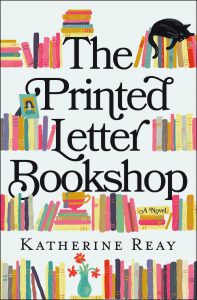by Katherine Reay, @Katherine_Reay
I always say I don’t write historical fiction because I am not a scene builder or a world builder and, to me, that is the hallmark of beautiful historical fiction. It must transport me to the past and make me believe that I, along with the characters, inhabit that time and space. It must be finely tuned and organic to the story — with no extras left over from superfluous research. Honestly, I wonder if I have the chops for it.
But that doesn’t mean I neglect scene — even if my time and space can be accessed by a plane flight or a drive — each scene’s location and setting must be authentic to the story and reveal only that which moves the reader and character along that trajectory.
Scene matters. For me, scene is a character.
In Lizzy and Jane, I chose to place Jane within Seattle with all the casual, outdoor-focus, Pacific Northwest vibe, that city carries. It not only informs Jane, but it provides the counter-balance to Lizzy’s life and all she has forgotten. To emphasize Lizzy’s change and the divide between the sisters as the story opens, I situated Lizzy in NYC. The two cities are geographically as far as you can get and flannel is probably not a top seller on Madison Ave.
Granted, I was playing on stereo types, but having lived in Seattle for many years and having spent extensive time in New York, I knew enough truth existed to let those details accentuate the sisters’ journey and differences. Without saying anything about the characters, the reader learns much from these details alone.
What about other scenes? Your scenes? If you want a woman to experience a sensorial call to love, hope and beauty — perhaps take her south with all its warm scents and sunshine, or, in my case, to Italy. For A Portrait of Emily Price, I needed something so outside the culture Emily knew and understood, with all its expectations and understandings, that I sent her off to Italy to keep off balance and open her up. If she had no where to stand, she might learn how to stand anew.
Don’t take scene for granted. Explore within it. Enjoy it. Embrace it. Scene can be an incredibly powerful force for a story and for your characters. I believe, as writers, it’s one of the primary tools in our toolbox. It’s background; it’s foundational; and it’s alive — at its best it is a moving organic character within your manuscript.
Play with your scenes on all levels. Once you’ve got your locale down, think of your individual scenes. A scene might be great in a park, but would it really sing with all the unspoken weight and history of an old church vestibule? A fight could occur in a kitchen, but what if you take it public and set in a restaurant?
Something to consider… and, as always, Have fun!
See you next month, Katherine
Love, friendship, and family find a home at the Printed Letter Bookshop.
Katherine Reay is the national bestselling and award-winning author of Dear Mr. Knightley, Lizzy & Jane, The Bronte Plot, A Portrait of Emily Price, and The Austen Escape. Her next novel, The Printed Letter Bookshop, will release May 2019. All Katherine’s novels are contemporary stories with a bit of classical flair. Her first nonfiction work will release December 2019. Katherine holds a BA and MS from Northwestern University, and is a wife, mother, former marketer, and avid chocolate consumer. After living all across the country and a few stops in Europe, Katherine now happily resides outside Chicago, IL. You can meet her at www.katherinereay.com or on Facebook: KatherineReayBooks, Twitter: @katherine_reay or Instagram: @katherinereay.



